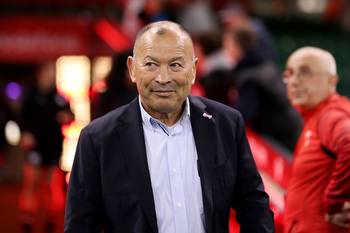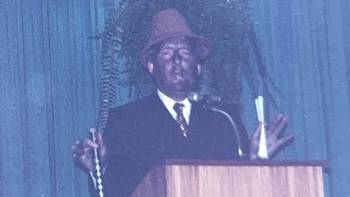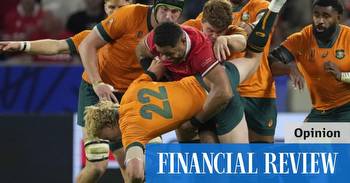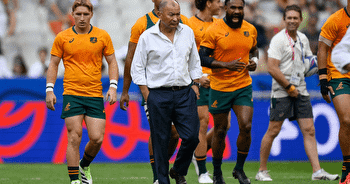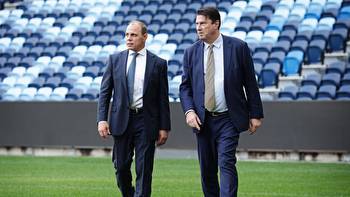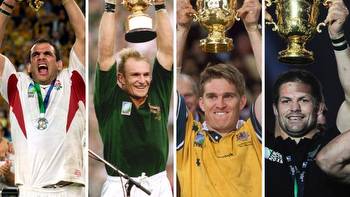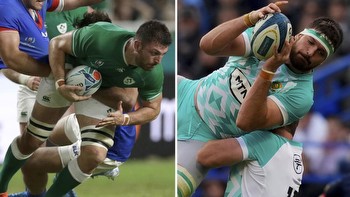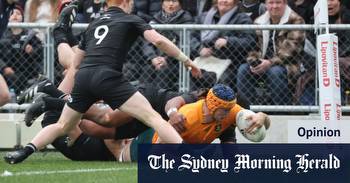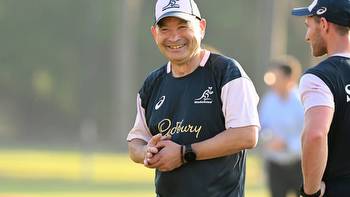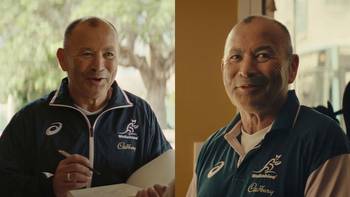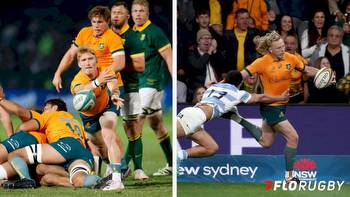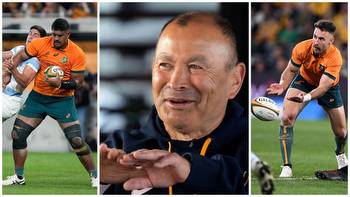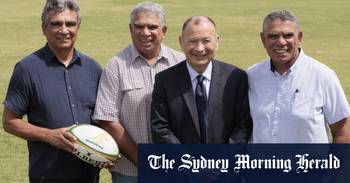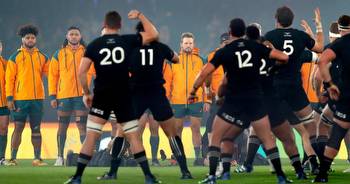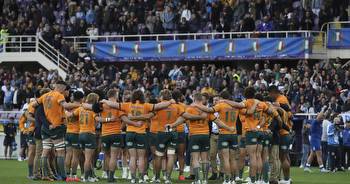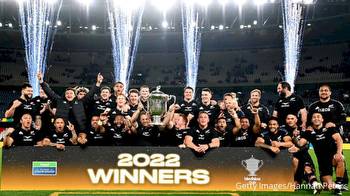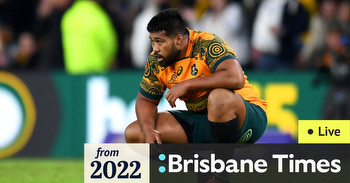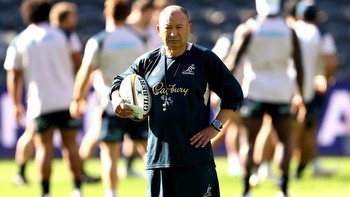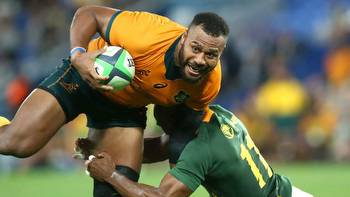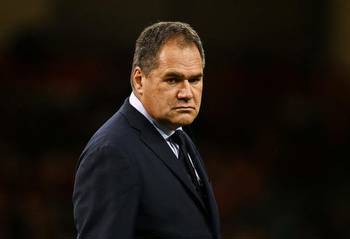Rugby World Cup: Don’t blame the Wallabies. Blame years of structural decline
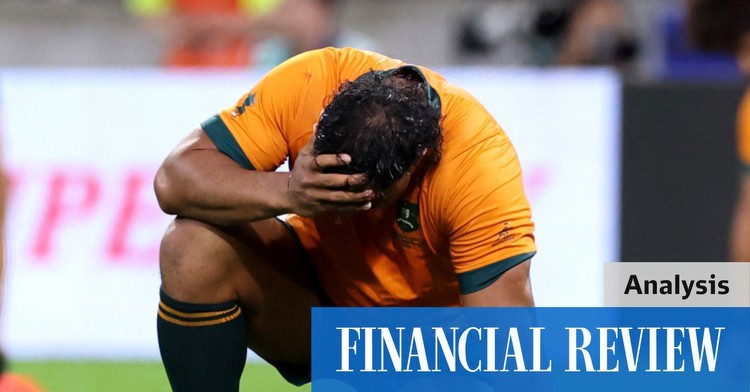
Last week, the tallest goalposts in the Southern Hemisphere, at Sydney’s Concord Oval, were brought down, packed up and taken away. Riddled with rust, they were deemed unsafe, now to be split up and offered to local museums.
The symbolism for Australian rugby could not be more acute or poignant, given the dismantling of the goalposts came just days before the destruction of the Wallabies by Fiji at the World Cup in Saint Etienne.
For Concord, it was the final chapter for a ground which once carried the hopes and dreams that Australia could boast its own Twickenham or Cardiff Arms Park, a “world-class showpiece”, as rugby authorities crowed at the time.
But after only two years of hosting international rugby, including the inaugural Rugby World Cup in 1987, the sport hastened from Concord to a more salubrious Eastern Suburbs hearth at Moore Park.
Yet, the corrosion in those Concord Oval goalposts has long permeated the administration of the game itself.
As far back as April 2010, according to confidential internal documents seen by AFR Weekend, Australian rugby administrators were being warned in general terms about the risks of being “blind to decline”, especially the perils of clinging to an “outdated organisational structure”.
They could not have missed the message then about a game reaching a “critical point in its history, during which it must undergo major reorientation and revitalisation or suffer certain failure”.
Further warnings came in 2015 of the “poor alignment between the Australian Rugby Union, Super Rugby and community rugby” with the added impetus to “explore an alternate, more viable model for Australian rugby”.
So don’t blame the players. Blame years of structural decline in how rugby in Australia is managed and administered. The team’s abysmal performance against Fiji brings everybody closer to the reckoning awaiting Australian rugby, and an acknowledgement of the reality of just how dire the state of the game is. Things are falling apart, to paraphrase Irish poet WB Yeats, and the centre most certainly cannot hold.
Last week’s loss to the Flying Fijians sets up the very real possibility that Australia may not make it past the pool stage. That would be a first for the Wallabies in the tournament’s history.
And history often has cruel reminders. Exactly 50 years ago the Wallabies suffered one of their most notorious defeats – to Tonga in Brisbane. Yet out of that debacle surfaced a national coaching and skills program that delivered players such as the Ellas, David Campese, and Michael Lynagh, and coaches Bob Templeton, Bob Dwyer and Alan Jones. Ultimately, they led Australia to the top of world rugby in the 1980s and 1990s.
But ironically, that golden period of Australian rugby might well have sown the seeds of the game’s current travails. An enduring sense of entitlement to that kind of achievement – despite the impoverished record of the Wallabies in recent years – is surely part of the reason why complacency and maladministration have plagued the sport since the late 1990s. The uniformed rugby buff in Australia, observes former national coaching director Dick Marks, came to believe Australia was owed this kind of success.
Never mind, as The Guardian’s Michael Aylwin pointed out in Unholy Union, that the golden age of Australian rugby from 1979-1999, stretching from the year Australia won its first Bledisloe cup in thee decades to the second World Cup triumph in Wales before the turn of the century, might instead be seen as something of an aberration.
Until the mid-1970s, excepting some stirring victories here and there, Australia’s international rugby record was rather dim.
And yet things have got worse. Wallaby supporters are now used to losing to the All Blacks – the Bledisloe Cup has not been held aloft by a gold jumper in more than 20 years. But losses to teams that were traditionally roadkill for Australian sides – such as Ireland, Scotland, Argentina, and now Fiji – are hard to swallow.
‘Endlessly coming of age’
Australian rugby still embodies Barry Humphries’ celebrated quip about the country itself. It is “endlessly coming of age”.
Eddie Jones, are banking on the future. Regardless of the result against Wales on Monday morning Australian time, things are going to need to change.
From Rugby Australia comes the line that the game’s popularity – and ongoing viability – will be revived by the incoming British and Irish Lions tour in 2025 and the hosting of the Rugby World Cup itself in 2027.
But neither event changes the fact that Australia remains, along with Ireland, the most saturated football market in the world. Nor, despite the presence of many players of Pacific Island descent wearing gold, can the game shake the reality that its administrators and outlook are still moored to the Gothic, Anglo-centric world of the private schools.
Rugby Australia is putting all its eggs in Eddie Jones’ basket. After initially talking up the idea of a “smash and grab” mission to claim the cup, Jones is also seeking refuge in the future. He is now assuring supporters that the blooding of this young team in France will reap due rewards down the track.
But for that bet to pay off, the team will have to be more competitive on the field, and fast. And it will need to develop the same kind of depth in a sport where serious injuries, including head injuries, have become the norm rather than the exception.
Statistical analysis of test matches now shows that whereas in the 1980s and 1990s there was an average of 100 tackles per match, today that number is closer to 300. Bigger, fitter, stronger players have been turned into self-guided projectiles.
The game’s administrators assure us that change too, is coming to the sport’s governance. After so many years of losing on the field and in junior participation stakes, pretty much everyone now agrees that something needs to be done about the way the game is administered.
Despite much talk of private equity investment and the taking on of debt, we still don’t have much idea of what that change looks like.
Until that vision emerges, the gulf between those demanding immediate success based on memories of a Wallaby golden age and the current, clueless crop of managers will likely endure.
The greatest of all rugby writers, Frenchman Denis Lalanne, once wrote of this phenomenon, noting that a “sort of disharmony between past and present that you can do nothing about insinuates itself slowly, like rust, between the consciousness of the ‘old soldiers’ and the living virtues of the ‘new recruits’.”
Time to cut the rust out, for good.
James CurranInternational EditorJames Curran is the Financial Review’s International Editor and professor of modern history at Sydney University.

